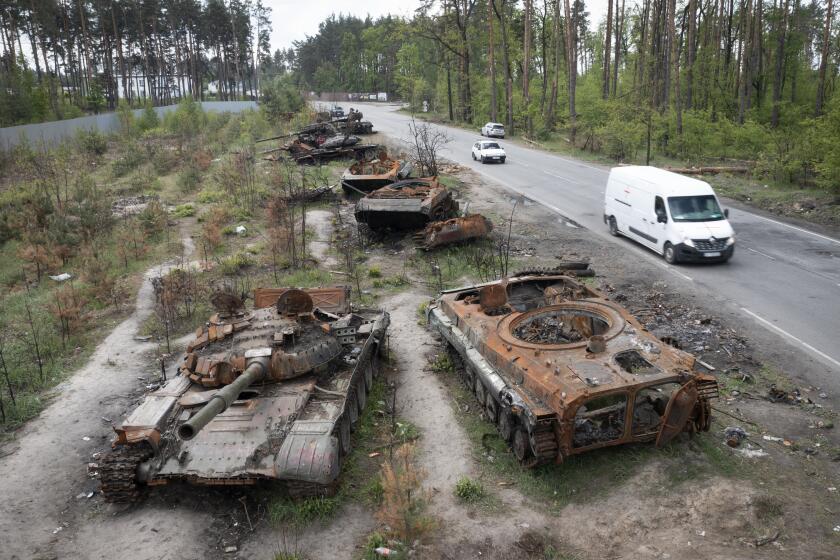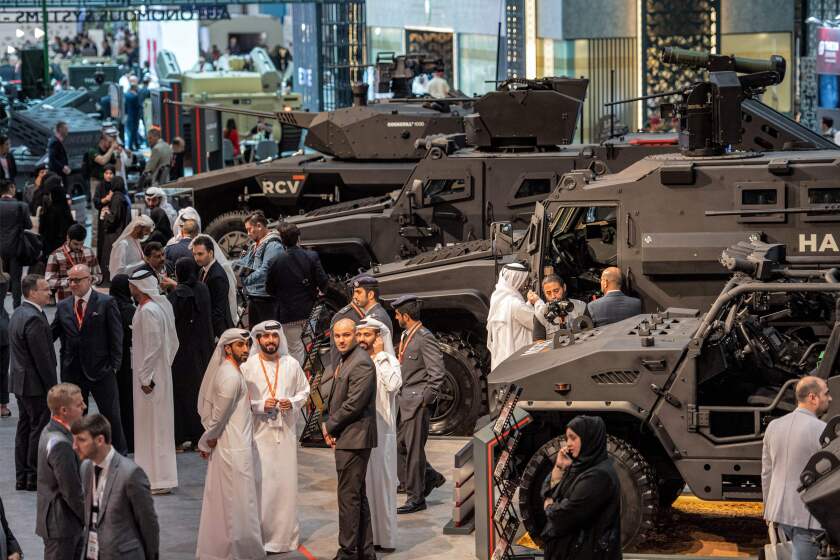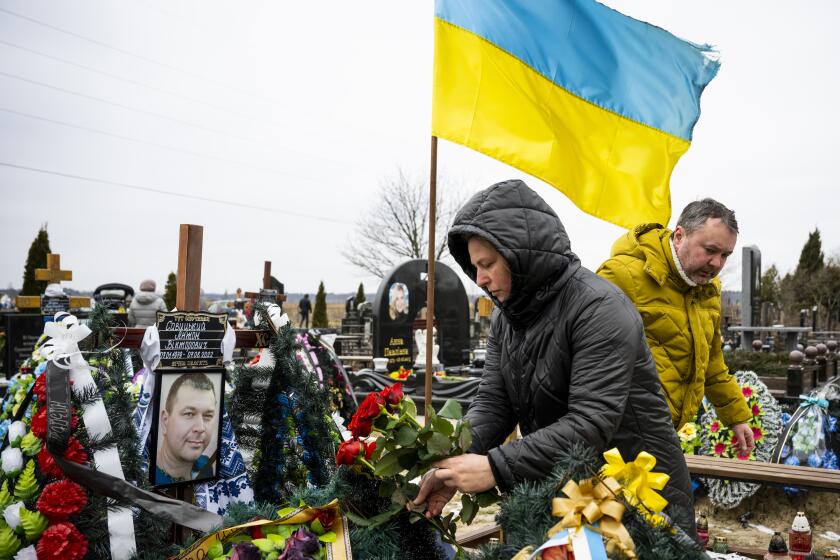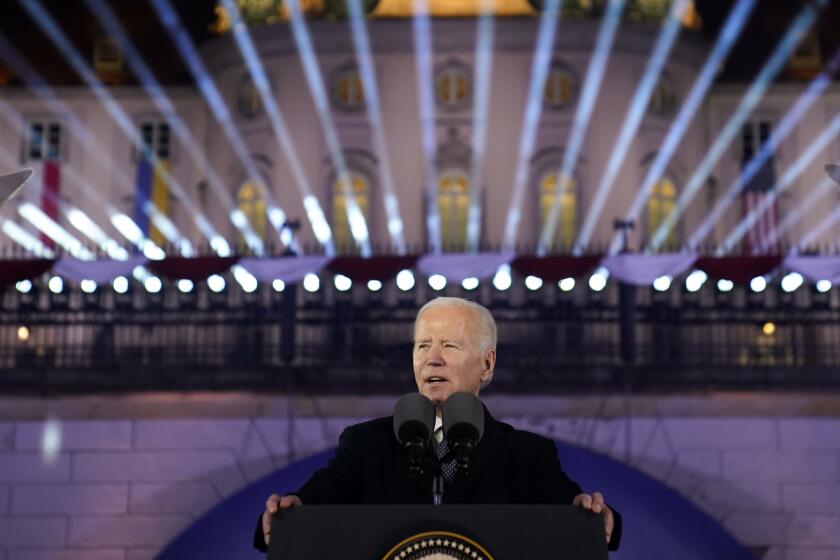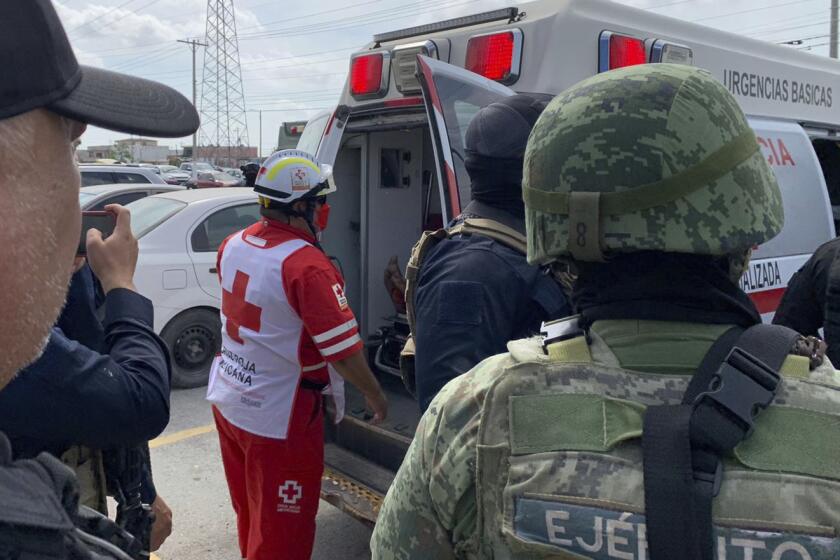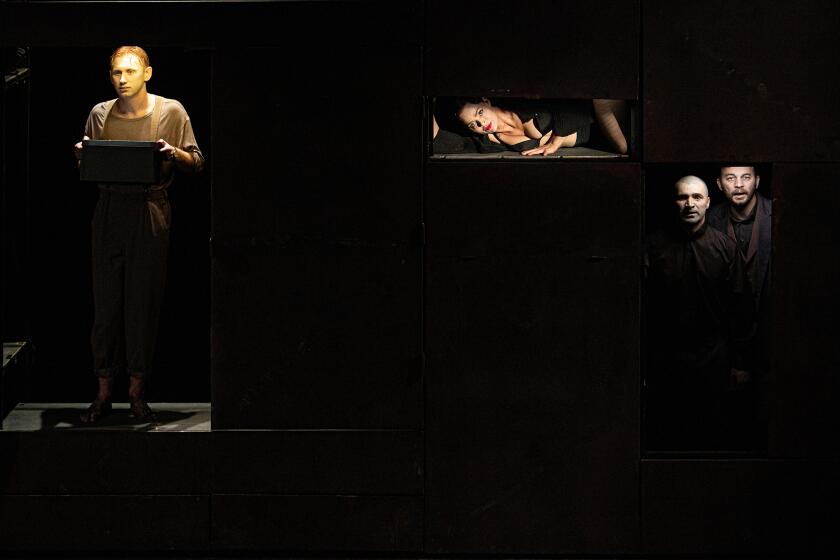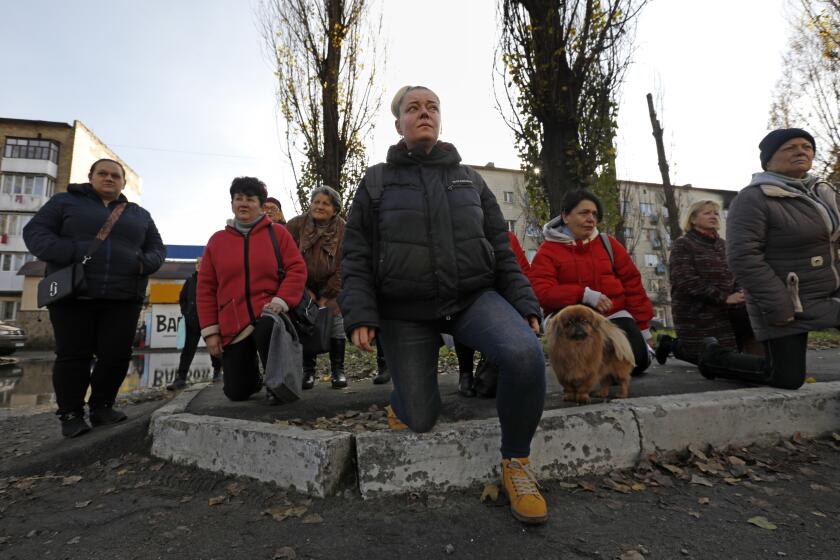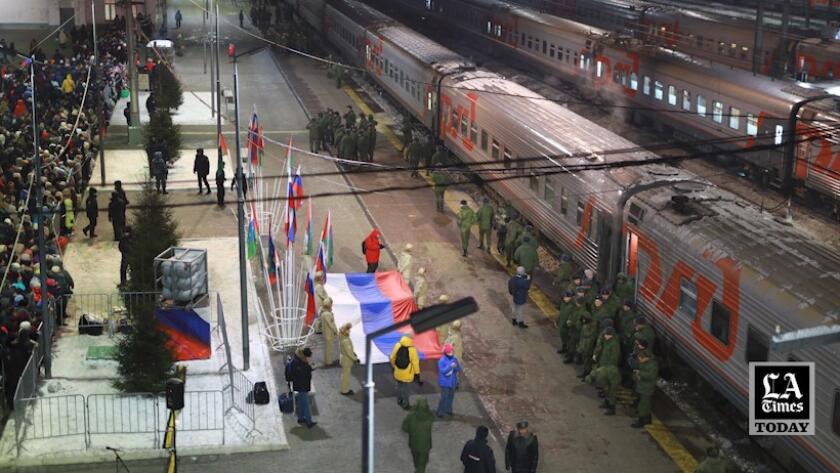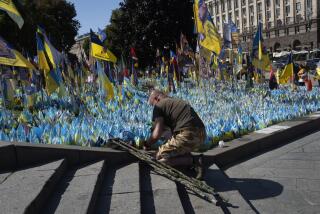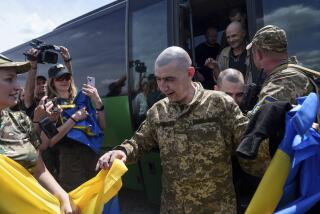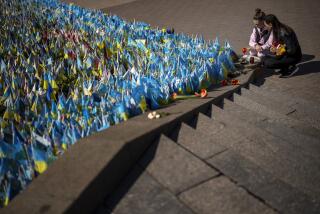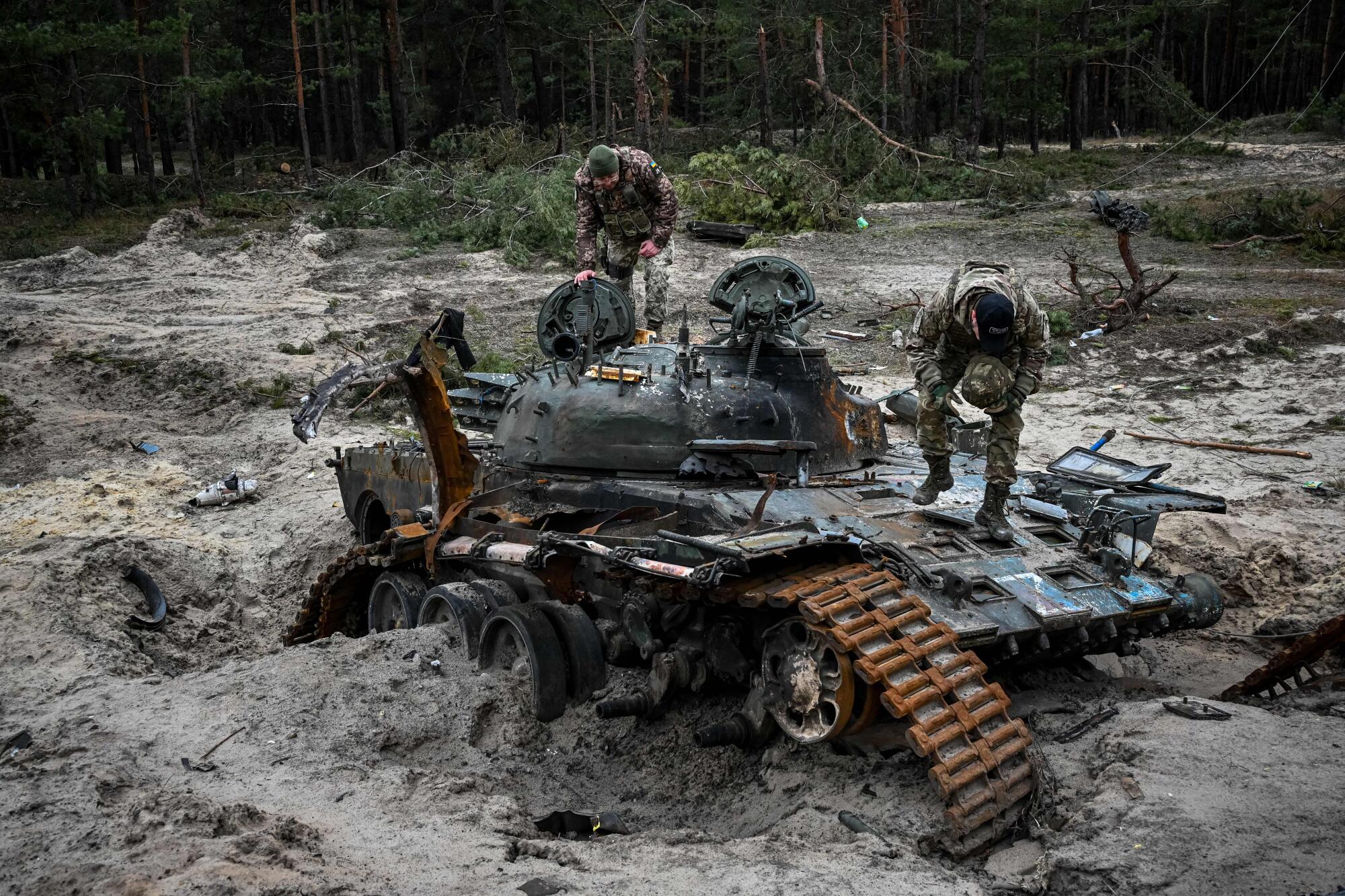
KYIV, Ukraine — Bound for the battlefield, sounding harried and anxious, the Russian soldier placed a hasty phone call — to a Ukrainian military hotline.
“They say you can help me surrender voluntarily, is that right?” asked the serviceman, explaining that he was soon to be deployed near the southern Ukrainian city of Kherson.
“When Ukrainian soldiers come, do I just kneel down, or what? Do you promise not to film me while this is happening?”
In fluent Russian, the hotline operator calmly assured him he’d be given detailed instructions on how to safely lay down his weapon and turn himself in.
“When you get to the front lines, just call us right away,” she said.
Ukraine’s “I Want to Live” hotline instructs Russian soldiers on how to surrender. The number passes from hand to hand in a war with many unwilling combatants.
At a crucial juncture in an extraordinarily bloody war, Ukraine’s military is focused on one task: removing Russian soldiers from the battlefield. But faced with a foe whose ranks are known to be riddled with unwilling fighters, Ukrainian military strategists realized there might be more than one means to that end.
With that, the “I Want to Live” outreach was born, aimed at providing invading forces with step-by-step information on how to abandon the ranks. Initially run by Ukrainian police, the program has had a ramped-up, military-operated version in place since mid-September.
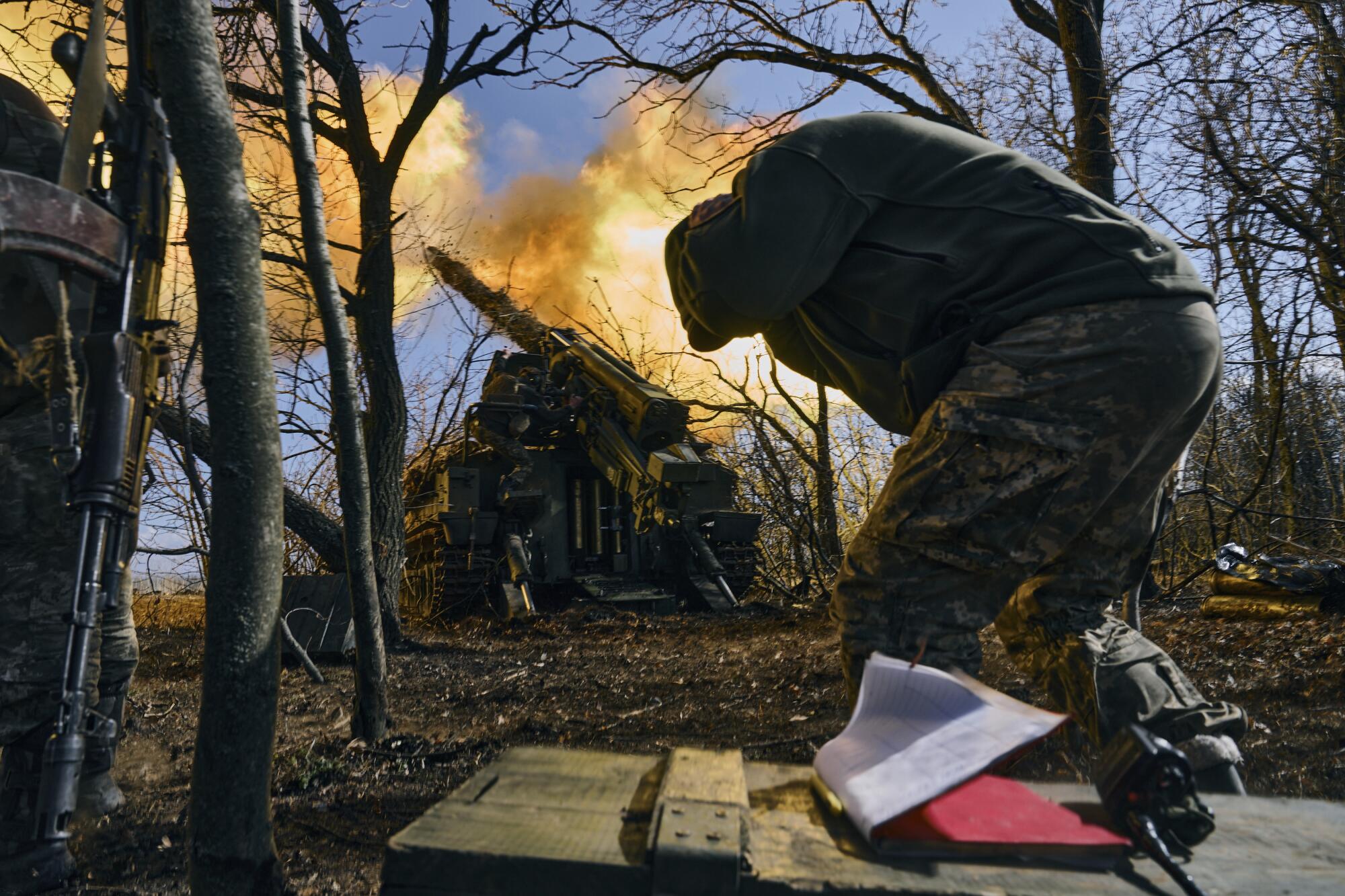
A Russian paratrooper has self-published an explosive memoir about his experiences in Ukraine. But not everyone considers him a hero for doing so.
On Russian-language social media, Ukrainians have spread the word about the program’s website, intended as a portal for the surrender-curious or their loved ones. It has attracted more than 13.3 million visits — 7.6 million of those from Russian territory, organizers said.
Russian soldiers also provide personal data through a chatbot on the encrypted messaging app Telegram — information Ukrainian authorities use to winnow down those who are serious about turning themselves in. The chatbot, together with the hotline, has drawn nearly 10,000 contacts, according to organizers.
Citing security reasons, Ukrainian officials declined to disclose how many surrenders have been brokered via the program. But hotline operators field calls around the clock from Russians who are soon to be mobilized, are in the midst of being deployed or are already on the battlefield. Callers might be jittery or stoic, defensive or remorseful, coolly businesslike or floridly emotional — sometimes all of those in a single conversation.
“So, this is not fake?” one Russian soldier asked.
“It is not fake,” the Ukrainian operator replied.
The war in Ukraine has jacked the global arms trade, fueling a new appetite for materiel not just in Moscow and Kyiv but also around the world.
The 10-member hotline team, all active-duty service personnel with backgrounds in psychology, is tasked with providing callers with clear, concise instructions, while being alert to signs that the outreach might be a “probe” by Russian intelligence, meant to elicit information about Ukrainian methods and intentions.
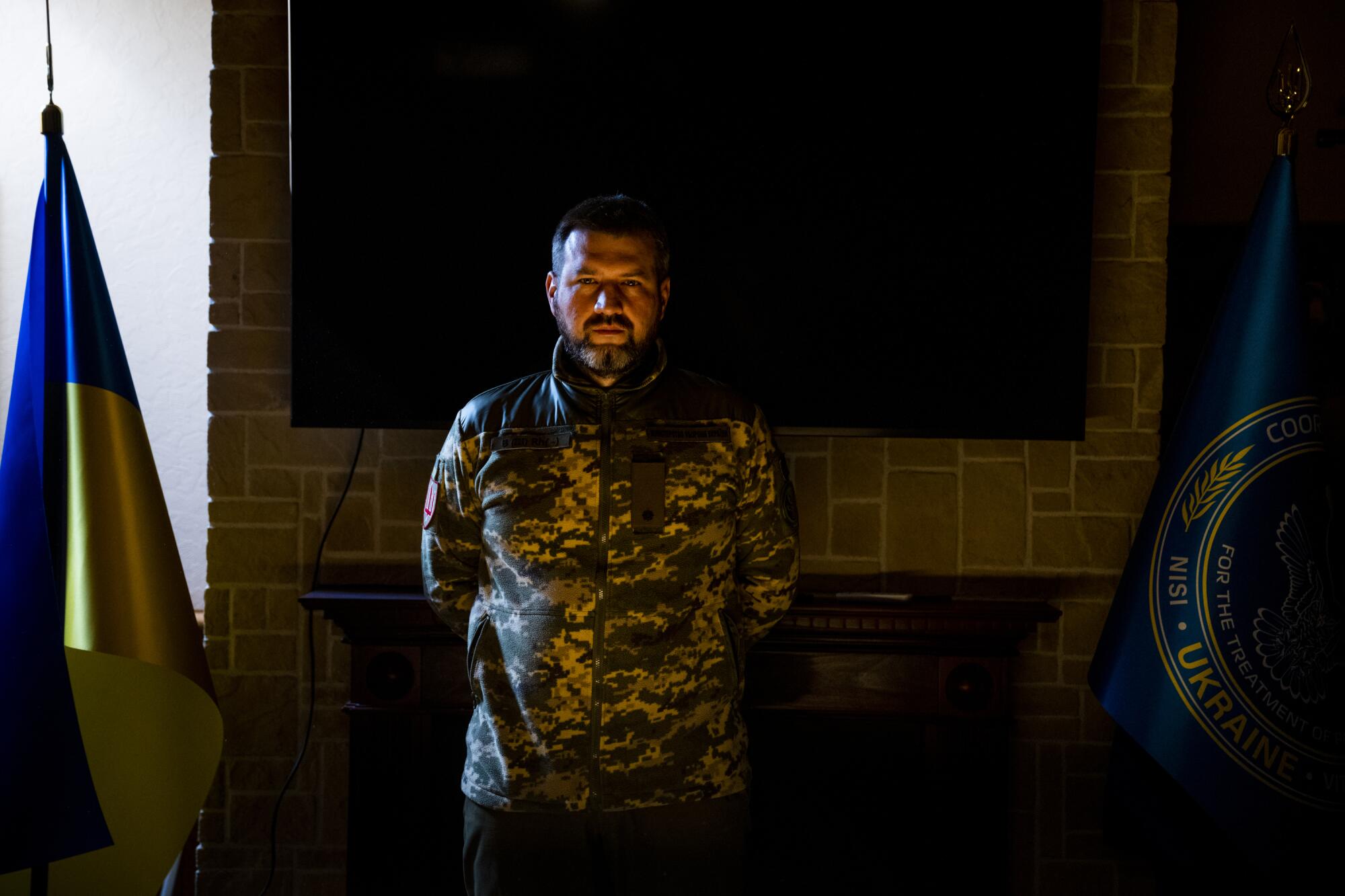
However tense the backdrop, those dealing directly with would-be surrenderers try to “calm them down,” said Vitaly Matvienko, a junior lieutenant who serves as spokesman for the program, which is run by the department for prisoners of war.
Putin believes he can outlast the West, even as U.S., Europe show robust support, unity after a year of conflict
“Hi, I’m listening,” goes a typically low-key operator salutation in an audio sampling of recent calls provided by the Ukrainian military. In the recordings made public, callers’ voices are distorted to shield their identities.
Hotline operators initially worked out of military headquarters in the Ukrainian capital, Kyiv, but were later moved to a secret location because they are now seen as a high-profile potential target, Matvienko said. The military refused to make any operators available for interviews but said they are male and female, a range of ages and all able to chat easily in colloquial Russian.
When it comes to surrenders in the field, both sides are aware that the moment carries enormous risk for all involved, he said.
“In general, it’s a very dangerous process,” said Matvienko. But strict protocols, clearly laid out in advance, improve the odds of everyone staying alive.
President Biden delivered a forceful speech Tuesday in Poland ahead of the first anniversary of the Russian invasion of Ukraine.
Russians who want to turn themselves in are told to wave a white cloth, remove the magazines from their guns, point the barrels to the ground and eschew body armor and helmets. They are assured that in the event they want to be sent home in a prisoner swap, their paperwork will reflect that they were captured, not that they gave up voluntarily.
If it’s a bring-your-own-tank surrender, which happens not infrequently, the turret is to be turned in the opposite direction. If it’s a group surrender — also a fairly common occurrence, with a Russian squad often fearing retribution from commanders but agreeing to act jointly and surreptitiously — the highest-ranking soldier must identify himself.
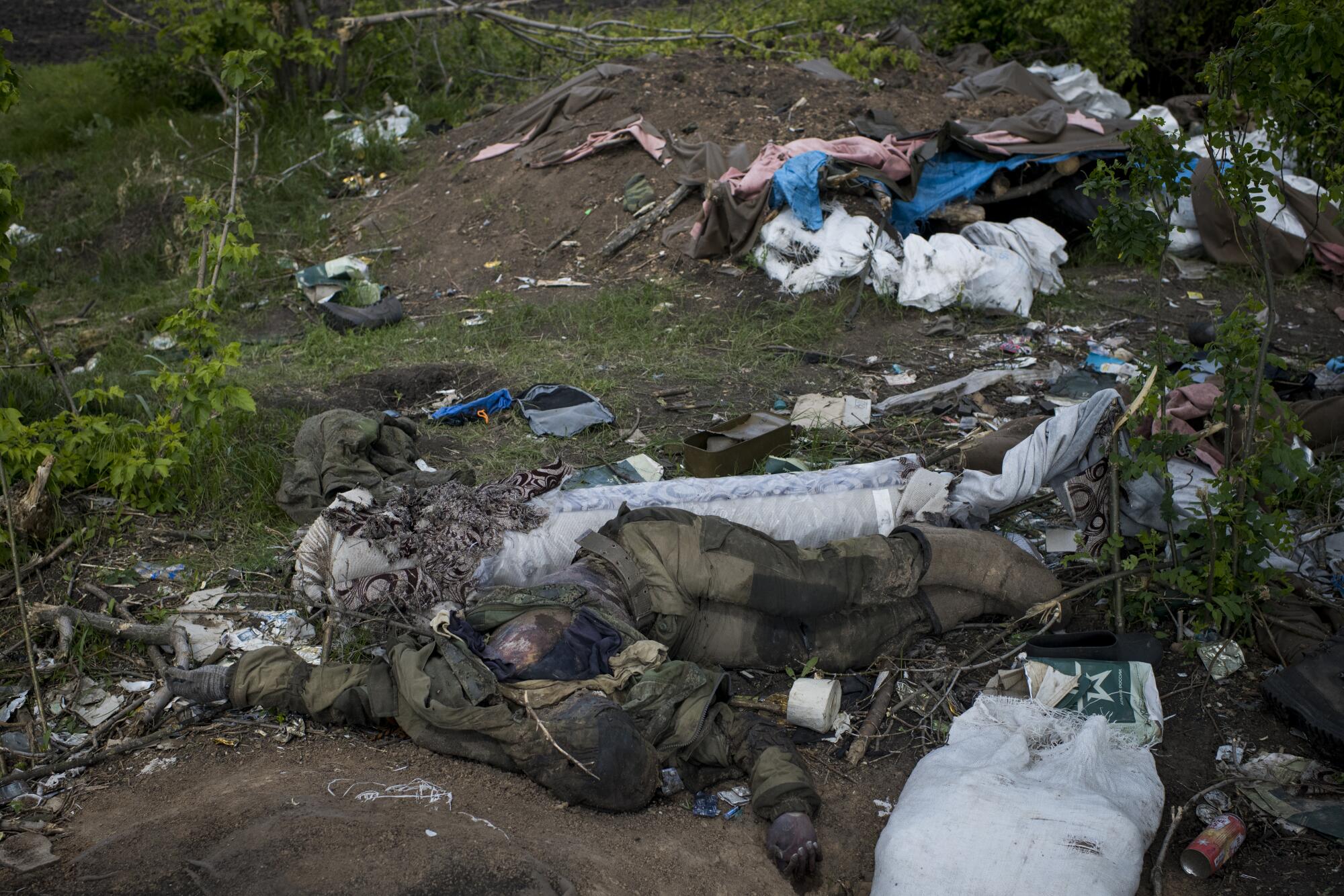
If a surrendering soldier runs out of options for separating himself from his unit, the hotline offers help.
“We can coordinate with special units that will extract you safe and sound,” one operator told a worried caller.
Like so much in this conflict, the “I Want to Live” program employs both high-tech methods and simple communication tools.
Russians facing deployment can communicate with the Ukrainian side using the Telegram chatbot, and before leaving for the front, they’re urged to procure and hide a basic flip phone — not a smartphone — and use that to call the hotline.
Mexico kidnapping: Two Americans are killed and two are rescued after being caught in crossfire in a violent border city. It has sparked international tension.
Ukrainians say they’ve heard from Russian soldiers already on the battlefield who learned of the hotline by word-of-mouth or from a scrawled-on slip of paper passed from hand to hand.
In Russia’s battle to subdue Ukraine, now in its second year, one of Moscow’s greatest advantages is the sheer number of troops it can throw into the fight, Western military analysts say — which is why Ukraine is willing to try novel tactics to reduce those numbers.
In addition to the 190,000 Russian soldiers who took part in the initial multipronged invasion that began in February 2022, Russian President Vladimir Putin last year ordered the mobilization of 300,000 more, many of whom are now in Ukraine. And another major mobilization is expected as Russia seeks to mount a spring offensive.
But despite a more than 2-to-1 Russian advantage in its standing military, Moscow’s faltering performance has been blamed on troop quality, which has deteriorated as the war goes on. Western military observers consistently cite poor morale, substandard training and shambolic supply practices as key factors in a string of Russian battlefield routs last autumn.
“In order to snatch a victory of sorts from the jaws of defeat, Putin must now rely on the overwhelming numbers provided by mass mobilization,” analyst Peter Dickinson wrote in a report last month for the Atlantic Council. “This is a tried and tested Russian tactic, but it also carries considerable risks.”
Staging of ‘Caligula’ in the Ukrainian capital is cathartic for audience and cast alike. ‘Resonates in this moment,’ says actor who plays Roman despot.
Deploying thousands of untrained soldiers “to fight against battle-hardened and highly motivated Ukrainian troops could result in the kind of carnage that breaks armies,” he wrote.
At the start of the invasion, some Russian troops apparently believed they would be welcomed by Ukrainians as liberators. But fierce military resistance, coupled with widespread shows of disdain and defiance from civilians, soon disabused them of that notion.
Last autumn’s mobilization by Putin prompted a huge exodus of fighting-age men from Russia, with hundreds of thousands settling in Turkey, Georgia, Kazakhstan and other nearby countries to avoid being conscripted.
Western analysts say it has become more widely known within Russia that Moscow’s commanders have scant regard for the lives and welfare of their own troops.
January and February saw an uptick in Russian-language social media postings about harrowing field conditions and chaotic leadership — accounts widely echoed in months of intercepted calls home from deployed Russian troops.
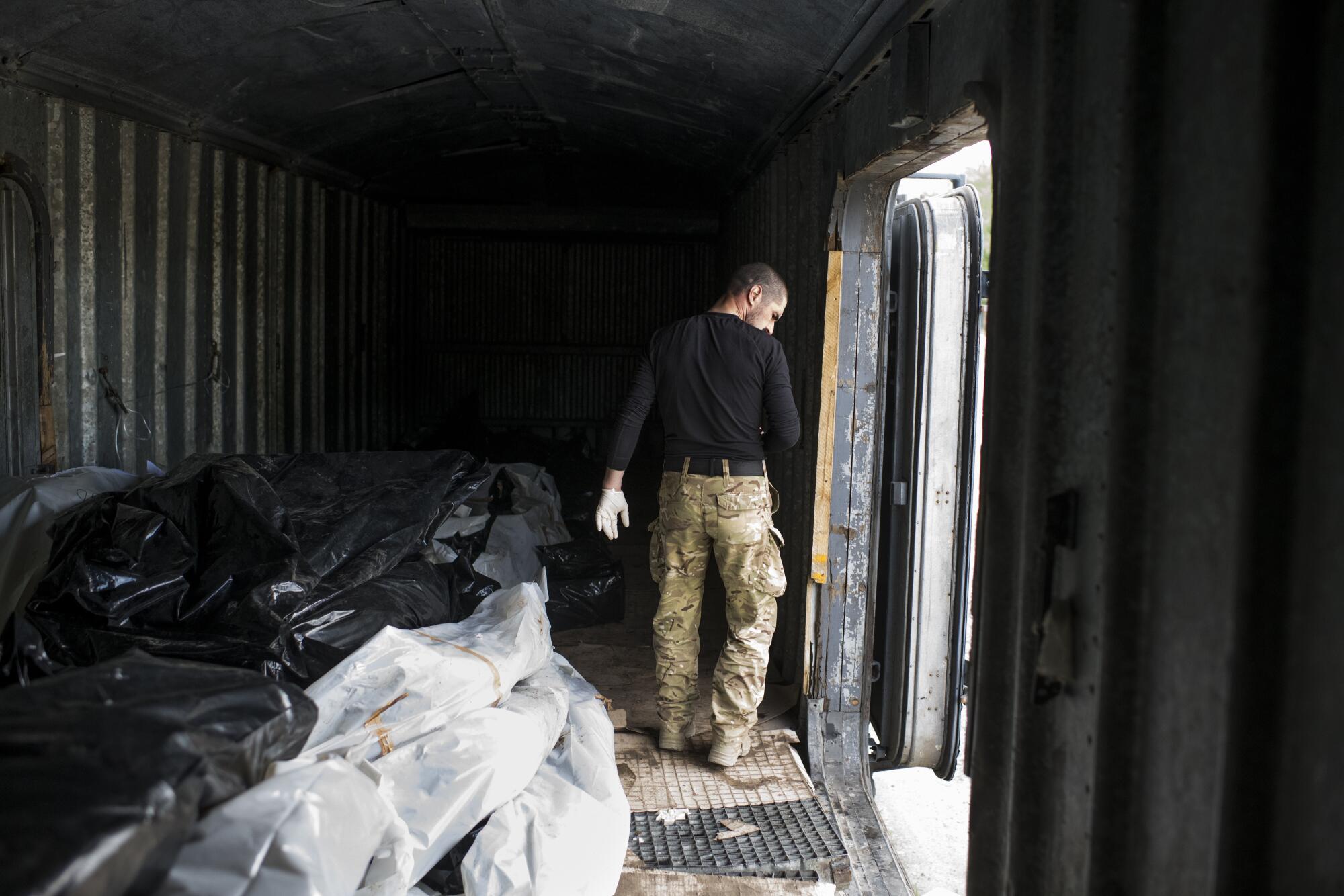
In mid-February, a British military intelligence assessment said Russian forces were suffering what appeared to be the highest casualty rates since the early weeks of the war — many occurring near the hotly contested town of Bakhmut. While Ukraine has suffered heavy attrition as well, Russia lost exceptionally large numbers of troops and armored vehicles in a failed attempt last month to storm the Ukrainian-held eastern town of Vuhledar — an apparently bungled opening volley in a much-vaunted Russian spring offensive.
Ukrainian officials hope that such setbacks will serve a dual purpose: inflicting a costly defeat, and prompting Russian soldiers to recognize the sometimes suicidal role they are expected to play in human-wave attacks on fortified Ukrainian positions, which have been a recurring feature of recent fighting.
On one Ukrainian street, surveying the wreckage wrought by nearly 9-month-old war. How best to rebuild?
“With their own eyes, they see they are nothing more than cannon fodder,” Matvienko said. “They see one of their comrades being ordered to walk into a minefield to find a path, and he gets blown up, and another is told to go next, and he’s blown up too, and on it goes.”
Episodes like this, he said, can galvanize a desperate sense of self-preservation.
“They realize this is real and not some war movie,” he said. “And the thought has to occur to them: ‘How do I save myself?’”
One caller, sounding angry and despairing, used an expletive to describe the prospect of sudden death in battle.
“A single mortar shell, and it’s done,” he said. “Who needs this war?”
Abortion pills: A Trump-appointed conservative judge’s upcoming ruling could have the biggest effect in blue states like California. What to know.
Watch L.A. Times Today at 7 p.m. on Spectrum News 1 on Channel 1 or live stream on the Spectrum News App. Palos Verdes Peninsula and Orange County viewers can watch on Cox Systems on channel 99.
More to Read
Sign up for Essential California
The most important California stories and recommendations in your inbox every morning.
You may occasionally receive promotional content from the Los Angeles Times.

